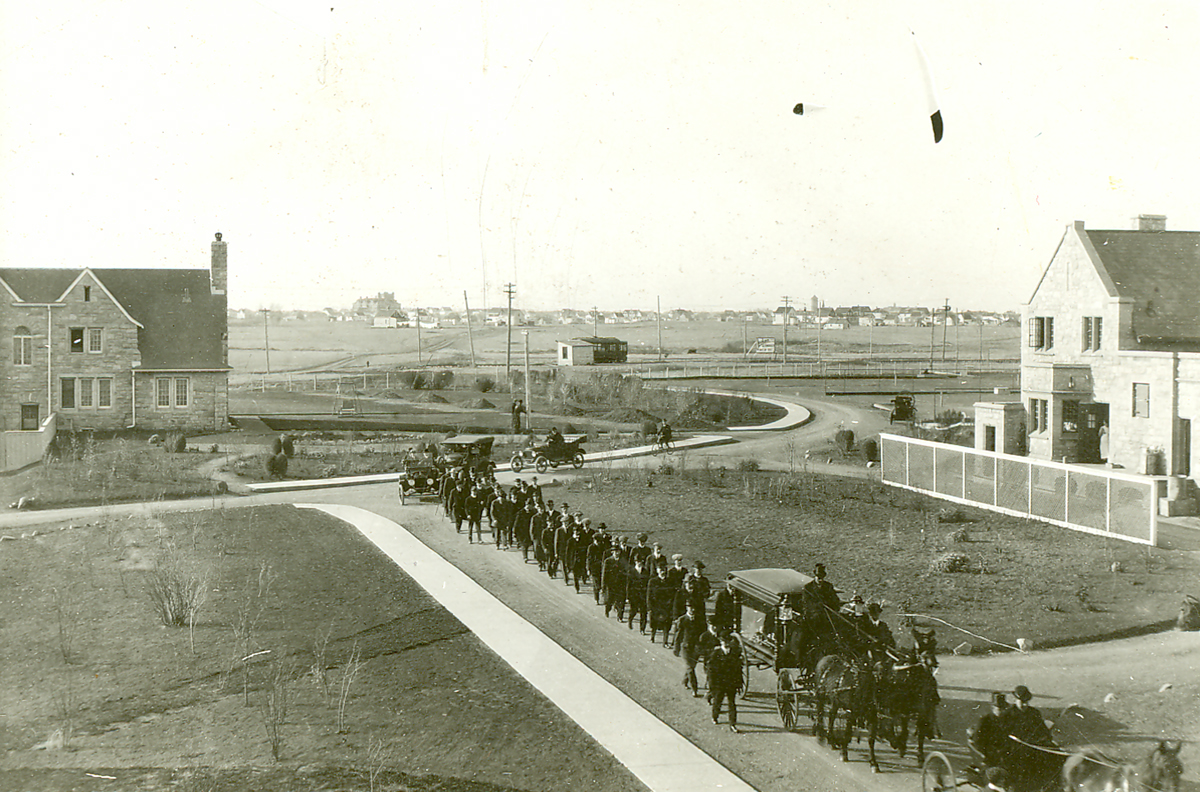Search Great War Images from the U of S
Spanish Influenza
 Toward the end of the Great War, in which some 11,000,000 died, a world-wide influenza epidemic killed an additional 50 million people. Most influenza outbreaks disproportionately kill juvenile, elderly, or already weakened patients; this pandemic killed previously healthy young adults. It was the same demographic that was demobilizing in Europe and returning to homes around the globe. Nowhere on earth was safe, from the remotest island to the greatest cities.
Toward the end of the Great War, in which some 11,000,000 died, a world-wide influenza epidemic killed an additional 50 million people. Most influenza outbreaks disproportionately kill juvenile, elderly, or already weakened patients; this pandemic killed previously healthy young adults. It was the same demographic that was demobilizing in Europe and returning to homes around the globe. Nowhere on earth was safe, from the remotest island to the greatest cities.
The influenza hit Saskatchewan as well, claiming at least 5,000. Relief and thanksgiving at the end to the war in 1918 could not wholly overshadow a year Walter Murray described as the University’s “most trying.” An enormous human cost had been paid: 345 faculty and students had gone overseas; and while 35 had received honours for their service, nearly 100 were seriously wounded and 69 had been killed. Neither was the University immune to the worldwide influenza epidemic which hit the province in October. The University promptly imposed a quarantine, having first released anyone who wanted to go home. With its farm, facilities and residences, the University was uniquely self-sufficient; all but one of the 120 faculty and staff remaining on campus was protected from the disease. Emmanuel College was used as an emergency hospital for the city, and those 20 individuals who volunteered to serve as nurses were billeted at the President’s residence. One volunteer contracted the flu and died: student William Hamilton, a widower with three small children. Just how successful the University had been, however, was evident when in the new year “without quarantine observance, over 150 cases developed within three weeks, and two students and four employees died.”
The year that had begun with “a startling absence of men of military age and fitness” ended with an enormous influx of returned soldiers following the armistice. As Murray wrote, it had been “a session begun with foreboding, broken by the scourge of disease, thrown into disorder by the constant coming and going of students, crowded with feverish attempts to accomplish in three months the work of six or seven,” leaving Murray with “memories of work badly done and a sense of incompleteness.”
Material in this section is scanned from the Shortt Library of Canadiana, the College of Agriculture fonds RG 2026, the Finacial Services Division fonds RG 2008, the Sharrard fonds MG 90 and selected Board of Governors minutes.

